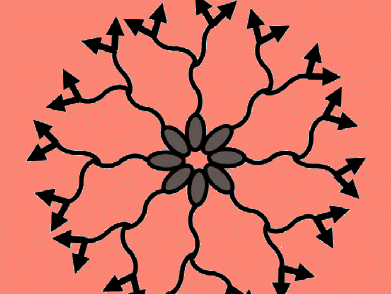A tumor’s angiogenic switch is dependent on its ability to recruit a blood supply. Without a blood supply, a tumor is unable to grow. Due to the many driving factors behind angiogenesis, there are many targets for therapeutic intervention.
 Ronit Satchi-Fainaro, Tel Aviv University, Israel, has reviewed multifunctional drug delivery strategies for a special issue of the Israel Journal of Chemistry on polymer therapeutics, of which she is also a guest editor. In the article she discusses the use of polymer-drug conjugates that target the tumor site. She notes that polymeric drug delivery systems are based on five common design themes:
Ronit Satchi-Fainaro, Tel Aviv University, Israel, has reviewed multifunctional drug delivery strategies for a special issue of the Israel Journal of Chemistry on polymer therapeutics, of which she is also a guest editor. In the article she discusses the use of polymer-drug conjugates that target the tumor site. She notes that polymeric drug delivery systems are based on five common design themes:
- The polymer-based backbone,
- Drugs,
- Spacers,
- Targeting groups, and
- Solubilizing agents.
Ronit Satchi-Fainaro discusses these in the context of different polymer backbones, with focus on HPMA copolymers, PEG, PGA and PG dendrimers and how these can be employed to deliver a tailored cocktail of drugs designed to prevent angiogenesis and thereby cancer growth.
- Rational Design of Multifunctional Polymer Therapeutics for Cancer Theranostics
P. Ofek, K. Miller, A. Eldar-Boock, D. Polyak, E. Segal, R. Satchi-Fainaro,
Isr. J. Chem. 2010, 50.
DOI: 10.1002/ijch.201000020




